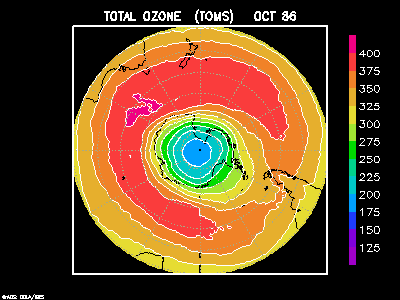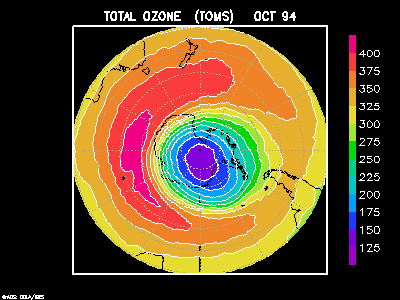October 1986

Since the ozone layer shields all the living things on the Earth from damaging ultraviolet radiation from the sun, its maintenance is essential for the health of all the living things. And yet, the chlorofluorocarbons (CFCs) used for semiconductor cleaning, compressors, spray cans, etc., could destroy ozone when transported to the stratosphere.
Evidence of serious ozone declines, so-called the ozone hole, over the Antarctic during the Antarctic-spring (September-November) was first reported by Japan Antarctic Survey scientist. Since then the depletion of ozone layer caused by human activities has become of worldwide great concern.
The lower-stratospheric ozone depletion could change radiative balance with possible effects on the surface-troposphere system resulting in climate change.
October 1986

October 1994

Ozone hole : the depletion of Antarctic ozone. (Monthly mean total ozone over the southern hemisphere in October.)
Contours are given at intervals of 30 m atm-cm (milli-atmosphere centimeters), and blue-colored areas indicates below 220m atm-cm (estimated from NASA-TOMS satellite data).